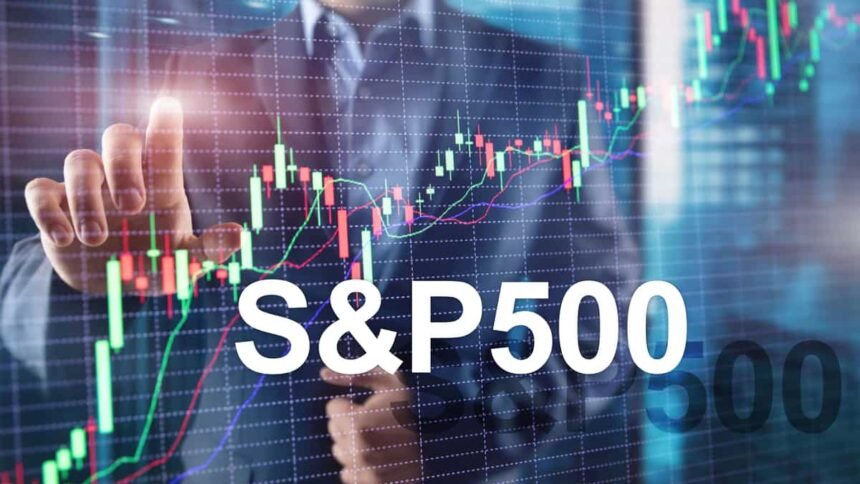The SPDR S&P 500 ETF Trust, commonly known as SPY, is one of the most heavily traded ETFs in the world. Tracking the S&P 500 index, it reflects the health and sentiment of 500 of the largest U.S. companies. Investors and traders closely watch SPY stock price movements as a gauge of market direction and overall economic sentiment. Understanding what drives daily SPY price changes can empower investors to make more informed decisions and manage risks more effectively. This article explores the key economic factors influencing the daily price fluctuations of SPY in 2025.
What Is SPY ETF and How Its Price Moves
SPY is an exchange-traded fund that represents ownership in a portfolio mirroring the S&P 500 index composition. Its price changes throughout the trading day in response to buying and selling activity on exchanges. Unlike individual stocks, SPY’s price movement corresponds to the collective performance of its component companies and broader market trends.
Its high liquidity, with average daily trade volumes above 70 million shares, ensures that SPY’s price is a real-time reflection of market consensus and sentiment.
Major Economic Factors Impacting SPY Price Daily
1. Corporate Earnings Reports
Corporate earnings directly affect SPY stock price because they determine the profitability trajectory of large-cap U.S. companies. Positive earnings surprises often trigger buying momentum, pulling SPY price upwards, while disappointing results can spark sell-offs. Since SPY covers various sectors, aggregate earnings forecasts and sector-specific performances collectively influence the ETF’s price.
2. Macroeconomic Data Releases
Economic indicators such as GDP growth rates, unemployment claims, inflation reports (Consumer Price Index, Producer Price Index), and consumer confidence indices significantly influence market expectations and thus SPY price movements. Robust economic data typically encourages investing, pushing SPY price higher, whereas signs of recession or inflationary pressures may induce market pullbacks.
3. Federal Reserve Policy and Interest Rates
Decisions by the Federal Reserve regarding interest rates and monetary policy profoundly impact market liquidity and asset valuations. Raising rates to curb inflation often pressures equity valuations, reflected by declining SPY price, while rate cuts or dovish guidance can boost investor confidence and push prices higher.
4. Geopolitical Events and Global Markets
International trade tensions, geopolitical crises, and global economic trends affect U.S. market stability and risk appetite. For example, escalating trade disputes or conflicts might cause SPY price declines due to increased uncertainty, while resolution of conflicts or favorable trade deals can have the opposite effect.
5. Market Sentiment and Technical Factors
Investor psychology, momentum trading, and technical analysis signals heavily influence SPY price volatility. Levels such as 50-day moving averages, support and resistance bands, and volume trends impact trader behavior, sometimes causing abrupt price shifts even in the absence of new fundamental information.
Role of SPY Futures in Price Discovery and Volatility
SPY futures, traded nearly 24/7 on platforms like CME Globex, are critical for price discovery as they allow investors to speculate or hedge U.S. market exposure outside regular market hours. Futures prices often lead SPY ETF price moves at market open, signaling expected direction based on overnight news or data.
The interaction between SPY futures and the ETF price smooths market volatility and ensures efficient price formation.
Recent Trends in SPY Price Movements for 2025
As of late 2025, SPY stock price has fluctuated between approximately $670 to $685, reflecting a cautiously optimistic market. Strong earnings forecasts and improving economic indicators have provided upward momentum, though inflation concerns and geopolitical tensions periodically weigh on investor sentiment, causing intraday volatility.
Analyst consensus projections place the average 12-month target price for SPY near $780, indicating potential for appreciation, though with risks warranting ongoing vigilance.
Read More: Is SPY Still the King of ETFs? A Deep Dive into Its Market Performance
Conclusion
Daily SPY stock price changes are influenced by a complex interplay of corporate performance, economic data, monetary policy, geopolitical events, and market psychology. Understanding these drivers, alongside the role of SPY futures in price discovery, equips investors with the insight needed to navigate daily market fluctuations confidently.









